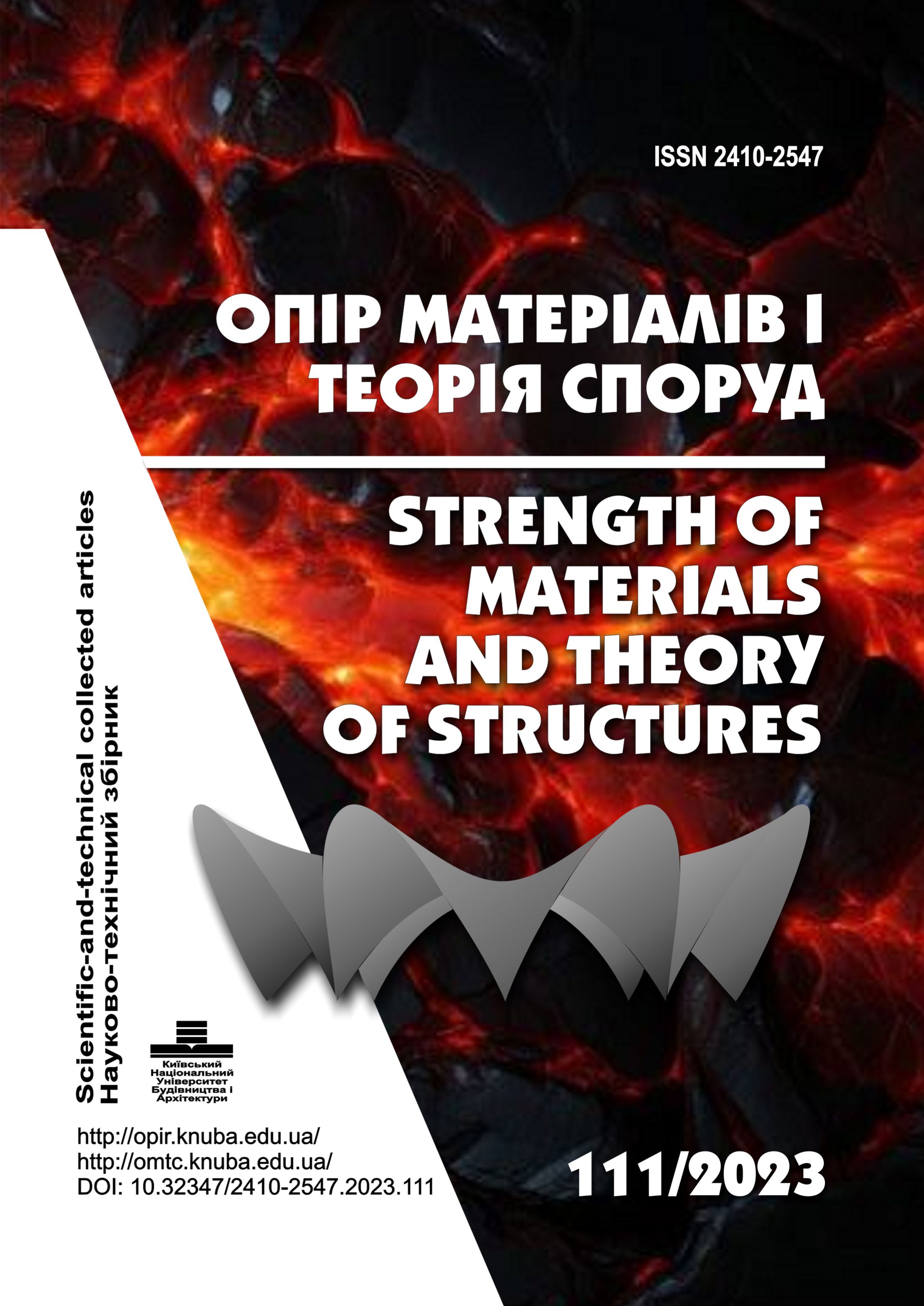Optimization of the mode of movement of the boom system of the loader crane
DOI:
https://doi.org/10.32347/2410-2547.2023.111.223-236Keywords:
mathematical model, combination of movements, manipulator, Lagrange equation of the second kind, dynamic loads, load oscillations, changing the boomAbstract
The article presents a method for solving the problem of eliminating vibrations of the load, which is fixed on a rigid articulated suspension at the time of simultaneous movement of two links of the boom system. The essence of the method is to optimize the mode of simultaneous movement of two links of the boom system of the loader crane with horizontal movement of the load during the start-up period. The problem is solved according to two optimization criteria, namely: according to the optimization criterion of the root-mean-square value of the generalized force and the optimization criterion of the root-mean-square value of the power of drive mechanisms. The developed criteria reflect the undesirable properties of the links of the boom system and drive mechanisms, so their value was minimized.
The solution of the optimization problem is presented in a discrete form. For this purpose, the particle swarm optimization (ME-PSO) method was used. This helped to obtain discrete values of the kinematic and power characteristics of the boom system of the loader crane.
Since the optimization criterion is an integral functional, the methods of the calculus of variations are used for its optimization. The solution of the variational optimization problem is presented in the form of many parametric functions that satisfy the boundary conditions of motion and minimize the obtained dimensionless criteria. For this purpose, the particle swarm optimization (ME-PSO) method was used. This made it possible to obtain the dependence of the optimal energy and power characteristics of the boom system and the drive mechanisms of the loader crane. The mode of movement of the boom system links obtained as a result of optimization improved the power and energy characteristics of the loader crane, which made it possible to increase its reliability and productivity.
References
Loveikin V.S., Romasevich Yu.O., Spodoba O.O. Mathematical model of the dynamics varying the radius jib system loader crane at adjustment movement arm and telescopic section. Engineering. Collection of scientific papers. 2019. Issue 24. P. 40-51. DOI 10.32820/2079-1747-2019-24-40-51.
Loveikin V., Romasevych Yu., Spodoba O., Loveikin A., Pochka K. Mathematical model of the dynamics change departure of the jib system manipulator with the simultaneous movement of its links. Strength of Materials and Theory of Structures. 2020. Issue 104. P. 175-190. DOI: 10.32347/2410-2547.2022.108.267-282
Loveikin V.S., Romasevych Yu.O., Kurka V.P., Mushtyn D.I., Pochka K.I. Analysis of the start-up process of the tower crane slewing mechanism with a steady state motion mode of its load trolley. Strength of Materials and Theory of Structures. 2020. Issue 105. P. 232-246. DOI: 10.32347/2410-2547.2020.105.232-246.
Loveikin V.S., Romasevich Yu.O., Shymko L.S., Loveikin Yu.V., Pochka K.I. The dynamic analysis of the joint trolley movement and hoisting mechanism in the tower crane. Strength of Materials and Theory of Structures. 2022. Issue 108. P. 267-282. DOI: 10.32347/2410-2547.2022.108.267-282.
Loveikin V.S., Romasevych Yu.O., Loveikin A.V., Liashko A.P., Pochka K.I., Balaka M.M. Drive power minimization of outreach change mechanism of tower crane during steady-state slewing mode. Strength of Materials and Theory of Structures. 2022. Issue 109. P. 317-330. DOI: 10.32347/2410-2547.2022.109.317-330.
Loveikin V.S., Romasevich Yu.O., Spodoba O.O. Mathematical model of dynamics change length of the crane arm system of a crane-manipulator. Hoisting and Conveying Equipment. 2019. Vol. 2 (61). P. 83-92. DOI: 10.15276/pidtt.2.61.2019.07.
Loveikin V.S., Romasevich Yu.O., Spodoba O.O., Loveikin A.V., Shvorov S.A. Comprehensive optimization of the mode of departure of the boom system of the loader crane. Machinery & Energetics. 2020. Vol. 11 (2). P 5-13. DOI: 10.31548/machenergy.2020.02.005-013.
Romasevych Y., Loveikin V. Novel Multi-Epoch Particle Swarm Optimization Technique. Cybernetics and Information Technologies. 2018. Vol. 18 (3). P. 62-74. DOI: 10.2478/cait-2018-0039.
Bozorg-Haddad O., Solgi M., Loáiciga H. Meta‐Heuristic and Evolutionary Algorithms for Engineering Optimization. John Wiley & Sons Inc, 2017. P. 304.
Kennedy J., Eberhart R. Particle swarm optimization. EEE International Conference on Neural Networks. 1995. P. 1942-1948.
Dubrovka F., Vasilenko D. Constructive synthesis of planar antennas using natural optimization algorithms. Izvestiya high schools, Radio electronics. 2009. Issue. 4. P. 3-22.
Kiranyaz S., Ince T., Yildirim A., Gabbouj M. Evolutionary Artificial Neural Networks by Multi-Dimensional Particle Swarm Optimization. Neural Networks. 2009. Vol. 22, Issue 10, P. 1448-1462. DOI: 10.1016/j.neunet.2009.05.013.
Heo J., Lee K., Garduno-Ramirez R. Multiobjective Control of Power Plants Using Particle Swarm Optimization Techniques. IEEE Transactions on Energy Conversion. 2006. Vol. 21, Issue 10. P. 552-561. DOI: 10.1109/TEC.2005.858078.
Zamani M., Karimi-Ghartemani M., Sadati N., Parniani M. Design of a Fractional Order PID Controller for an AVR Using Particle Swarm Optimization. Control Engineering Practice. 2009. Vol. 17, Issue 12, P. 1380-1387. DOI: 10.1016/j.conengprac.2009.07.005.
Chander A., Chatterjee A., Siarry P. A New Social and Momentum Component Adaptive PSO Algorithm for Image Segmentation. Expert Systems with Applications. 2011. Vol. 38, Issue 5, P. 4998-5004. DOI: 10.1016/j.eswa.2010.09.151.
Downloads
Published
Issue
Section
License

This work is licensed under a Creative Commons Attribution 4.0 International License.
Authors retain copyright and grant the journal right of first publication with the work simultaneously licensed under a Creative Commons Attribution License that allows others to share the work with an acknowledgement of the work's authorship and initial publication in this journal.

